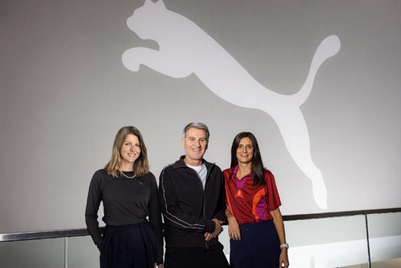
For the past decade, marketers have been navigating the new norms of the digital age and adjusting to a new era of deep customer engagement. They’ve tacked on new functions and hired social-media management. They’ve altered processes to integrate advertising campaigns online, on television, and in print.
But is it enough? After all, in the era of engagement, marketing is the company. Thinking this through, I was reminded of a McKinsey article: How we see it: Three senior executives on the future of marketing.
In the article, Steve Ridgway (outgoing CEO of Virgin Atlantic), John Hayes (CMO of American Express), and Duncan Watts (author, former head of Yahoo! Research, and now head of Microsoft Research), serve up three brilliant insights in the digital age.
1. The big idea
Ridgway argues that nothing replaces the power and impact of a big, well-crafted, creative idea. An idea that runs not just through the campaign, but also through the veins of the very brands it represents.
Yes, a superior customer experience that spans all the touchpoints between a brand and its customers is a vital marketing tool. But as Ridgway says, we “…don’t want to lose sight of how important it is to have all of our marketing efforts somehow embodied in something bigger—something iconic, even.”
Virgin Atlantic’s 2009 ATL campaign ‘Still Red Hot’ encapsulates this very point. From a digital perspective, it was not only the critical catalyst for viral and social engagement, but it reinvigorated and now constitutes the Virgin Atlantic brand itself. At the end of the day, customers no longer separate marketing from the product—it is the product.
And this, I think, is a critical point for marketers. Too many marketers still view digital—and specifically social and viral marketing—as both ‘free’ media, and as somehow distinct from their ATL activities. But in my experience with clients like McDonald’s and VW—and reinforced by Virgin Atlantic—nothing drives viral and social engagement, and return on marketing investment, better than a big, if not iconic, creative idea.
2. Collaboration
Hayes' reaction to a world where marketers are still accountable for driving results, but where the very nature of social media hands over a large amount of ‘control’ to the digital democracy of consumers, provides a valuable lesson to us all.
Amex’s reaction has been to break down the organisational silos within the company. Collaboration and cross-functional teams remove the structural barriers between business units which, more often than not, share the same customers. This can only ratchet up innovation, speed of response, and service performance.
And in Amex’s case, you can see the benefits in terms of its communications. Perhaps one of the most ‘creative’ campaigns submitted late last year at the Digital Media Awards was Amex India’s ‘Gunning For Gold’ and its use of LinkedIn to target affluent prospects. The bank only connected via the social platform, but also offered deals on social, as well as promoting the concept of digital wallet through tying up with popular social gaming.
The campaign would not have been born had Amex not forced itself—and its agencies—to break organisational norms.
3. Data and customer behaviour
Finally, from Watts, I want to highlight the vital importance of data and more specifically, of insight into customer behaviour. While I’m not sure Watts’ assertion that there is no room for intuition in marketing is altogether right, I do agree that both clients and agencies need to embrace the data revolution.
We need to continue building tools and teams that are able to quickly identify and act on key insights from the vast data trail of consumer behaviour. Let’s challenge ourselves to go deeper into data patterns of behaviour, decision-making and brand loyalty.
So, as we embark on 2013 and begin implementing our finely crafted marketing plans, it’s well worth keeping in mind these salient points:
- A big, well crafted, ATL or mass media creative idea is as important as ever, and is THE catalyst for social media engagement
- Break down your organisational silos to thrive in a world where we’re no longer in control of marketing; and
- Data trumps intuition and it’s up to us to ensure we can better mine the vast amounts of behavioural data for the insights to help us succeed.


.jpg&h=334&w=500&q=100&v=20250320&c=1)


.png&h=334&w=500&q=100&v=20250320&c=1)




.png&h=334&w=500&q=100&v=20250320&c=1)



+Effie+HK+00.JPG&h=268&w=401&q=100&v=20250320&c=1)
.jpg&h=268&w=401&q=100&v=20250320&c=1)
.png&h=268&w=401&q=100&v=20250320&c=1)


